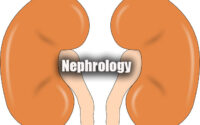Geriatric Medicine MCQ
Geriatric Medicine MCQ Question Papers Free Pdf is available. We have given Geriatric Medicine MCQ Question Papers in a PDF format. So that the applicants can get the Clinical Geriatric Medicine MCQ Question Papers for practice purpose. We have also provided solutions for the Geriatric Medicine MCQ Question Papers. Therefore, Applicants can check the answers with actual solutions while practicing Geriatric Medicine MCQ Question Papers. Here we are providing MCQ Question Papers for Geriatric Medicine Exam.

MCQ Question on Geriatric Medicine
1. Paroxysmal Atrial Fibrillation is defined as a pattern of AF episodes that occur spontaneously and terminate with a relatively short duration, most commonly defined as……………..
(1) 5 days or less
(2) 10 days or less
(3) 7 days or less
(4) 14 days or less
2. Dietary protein requirement of an older individual with pressure sore is –
(1) 25% calories as protein
(2) 20% calories as protein
(3) 15% calories as protein
(4) 12% calories as protein
3. Following drugs are more likely than others to cause serious Adverse Drug Reactions in older patient, EXCEPT –
(1) NSAIDs
(2) Anticoagulants
(3) Benzodiazepines
(4) Macrolides
4. Indications for surgery in Abdominal Aortic Aneurysm (AAA) is –
(1) Aortic diameter >5.5 cm in males and >5.0 cm or greater in females
(2) Aortic diameter >5.0 cm in males and >5.5 cm or greater in females
(3) Aortic diameter >4.5 cm in males and >4.0 cm or greater in females
(4) Aortic diameter >4.0 cm in males and >4.5 cm or greater in females
5. Following is true of “Abbreviated comprehensive geriatric assessment (aCGA)’, EXCEPT –
(1) 3 questions about ADLs (Activities of Daily Living)
(2) 4 questions about IADLs (Instrumental Activities of Daily Living)
(3) 3 questions from the MMSE (Mini Mental State Examination)
(4) 4 questions from the GDS (Geriatric Depression Scale)
6. Common nonspecific clinical presentations of disease in the older population include all, except –
(1) Fatigue
(2) Fever
(3) Rash
(4) Altered Mental Status
7. Sarcopenia is not assessed by –
(1) Dual-energy X-ray Absorptiometry
(2) Bioimpedance Analysis
(3) Handgrip strength
(4) Ultrasound examination
8. True statement about Physician-Assisted Suicide (PAS) –
(1) Physician provides a patient with the means to commit suicide
(2) Physician commits suicide
(3) PAS is legal in India
(4) Legal in Switzerland, the Netherlands, Luxembourg, Belgium
9. Patient with Autosomal Dominant Polycystic Kidney Disease is more likely to suffer from………….
(1) Ischemic Heart Disease
(2) Ulcerative Colitis
(3) Intracranial aneurysm
(4) Polyneuropathy
10. While prescribing physical exercises to an older individuals physician has to evaluate the risks of exercises. What incorrect about it?
(1) Potential for fails and accidents
(2) Awareness about symptoms of ischemic heart disease
(3) Drug history
(4) All of the above
11. Following is true about athetosis, except –
(1) Slow movement
(2) Writhing movement
(3) Usually affects trunk muscles
(4) Usually affects arms and hands
12. Progressive dwindling in end-of-life care denotes –
(1) Mortality because of combination of frailty and dementia
(2) Mortality because of malignancy
(3) Mortality because of dementia
(4) Mortality because of frailty
13. All of the following are Myeloproliferative Disorders (MPDs), EXCEPT –
(1) Polycythemia Vera (PV)
(2) Essential Thrombocythemia (ET)
(3) Chronic Idiopathic Myelofibrosis (CIF)
(4) Chronic Myelomonocytic Leukaemia (CMML)
14. “CASES” approach in geriatrics includes all except –
(1) Clarify the information
(2) Assemble & synthesize the information
(3) Explain the information
(4) Summate at the end
15. With ageing pharmacokinetic changes are all, EXCEPT –
(1) Interindividual variability
(2) Reduced hepatic and renal clearance
(3) Small change in volume of distribution
(4) Reduced first-pass metabolism, with reduces bioavailability of drugs that undergo Significant first-pass hepatic metabolism
16. Which of the following organisms is least likely to be isolated in the sputum of a patient with cystic fibrosis?
(1) Haemophilus influenzae
(2) Acinetobacter baumannii
(3) Burkholderia cepacian
(4) Aspergillus fumigatus
17. Unexplained anemia of elderly people is likely to result from all, EXCEPT –
(1) Hypocellular marrow
(2) High erythropoietin levels
(3) Androgen Insufficiency
(4) Defects in hypoxia signaling
18. Near death due to loss of gag reflex and dysphagia, accumulation of oral secretions causes noisy respiration “the death rattle”. Which drug could be useful for it?
(1) Scopolamine
(2) Albuterol
(3) Ambroxol
(4) N acetyl cysteine
19. The diagnosis of Acromegaly is confirmed demonstrating the failure of Growth Hormone suppression to……………….within 1-2 hours of an oral glucose load (75g).
(1) <0.2 g/l
(2) <0.4 g/l
(3) <0.6 g/l
(4) <0.8 g/l
20. All statements about Open Reduction Internal Fixation (ORIF) to arthroplasty for treatment of displaced femoral neck fractures in older adults is correct, EXCEPT –
(1) The complication rate for those patients undergoing ORIF is higher
(2) The need for revision surgery for those patients undergoing ORIF is higher
(3) The need for revision surgery for those patients undergoing arthroplasty is higher
(4) Dislocation rate is higher with total joint arthroplasty
| MCQs | Quiz |
| Objective Questions | Questions and Answers |
21. Following is true of increased Parathyroid levels with aging in elderly, EXCEPT –
(1) 1,25(OH)2D3 production by the aging kidney decreases with aging
(2) Increased renal 1a-hydroxylase to circulating PTH1
(3) A reduction in dietary intake and absorption of calcium and vitamin D
(4) A reduction in vitamin D production in the skin
22. How can a caregiver improve communication with an older adult with hearing impairment?
(1) Shout to the patient to hear better
(2) Avoid light on your face to discourage lip reading
(3) Avoid interaction
(4) Let the person see your face when you speak
23. Which statement is INCORRECT for nutrition?
(1) Aging is associated with increasing incidence of weight loss and Protein-Energy Malnutrition.
(2) Undernutrition leads to frailty, physical dependence, and premature death.
(3) The elderly being a homogeneous group, a uniform dietary schedule can be prescribed.
(4) Anorexia in older adults occurs due to lack of exercise, loneliness, depression, chronic debilitating disease, confusion, forgetfulness, side-effects of drugs, alcohol, and smoking.
24. Following is true about HLA-B27 in ankylosing spondylitis (AS)
(1) Only 5% of HLA-B27-positive people develop AS
(2) Only 10% of HLA-B27-positive people develop AS
(3) Only 15% of HLA-B27-positive people develop AS
(4) Only 20% of HLA-B27-positive people develop AS
25. Etiology of hypercalcemia includes all except –
(1) Lithium
(2) Vitamin D intoxication
(3) Immobilisation
(4) Acute Rhabdomyolysis
26. The following statement about changes in inflammatory markers with increasing age are true, except –
(1) Decreased C reactive protein (CRP)
(2) Increased ESR
(3) Increased Interleukin-6 (IL-6)
(4) Increased Tumor necrosis factor alpha (TNF-0)
27. A 65-year-old male presenting. with chronic abdominal pain, weight loss, steatorrhoea, malabsorption, history of alcohol abuse and history of recurrent pancreatitis. Which test has to be undertaken first?
(1) Magnetic Resonance Imaging (MRI) and Magnetic Resonance Cholangiopancreatography (MRCP)
(2) Contrast enhanced Computed Tomography of abdomen (CECT)
(3) Endoscopic Ultrasound (EUS)
(4) Pancreatic function test with Secretin-Endoscopic Collection (ePFT)
28. Which is not a potential barrier to advance care planning for older people?
(1) Unwillingness of family members to accept their relative is dying
(2) Absence of cognitive impairment
(3) Patients perceiving end-of-life care discussions as the responsibility of family members
(4) Patient thinking ‘My doctor will decide for me’
29. Following is true of Diabetes in elderly, EXCEPT –
(1) Insulin secretion diminishes by 0.7%/year with increasing age
(2) Symptoms may be absent in up to 50% of patients
(3) The classic osmotic symptoms are usually less prominent
(4) Postprandial or 2-hour oral glucose tolerance test is less reliable than fasting blood sugar levels for diagnosis
30. Treatment of Hyperthyroidism in elderly includes all, EXCEPT –
(1) Radioactive iodine ablation can be used safely.
(2) Methimazole is drug of choice for medical management of hyperthyroidism in elderly.
(3) Propylthiouracil is a drug of choice for medical management of hyperthyroidism in elderly.
(4) Surgery is reserved for large goitres with obstructive symptoms of known or suspected malignancy.
31. Acute renal failure in elderly occurs commonly due to all, EXCEPT –
(1) Aminoglycosides
(2) Obstructive Uropathy
(3) Cystitis
(4) NSAIDs
32. Common Cancers in old age are all, EXCEPT –
(1) Head and Neck Cancers
(2) Soft tissue Sarcomas
(3) Cacolon
(4) Lung cancer
33. The focus of Occupational therapy is on –
(1) Restoration of functions
(2) Relief of symptoms
(3) Improving communication
(4) Tackling cognitive impairment
34. Following is true of asymptomatic bacteriuria in elderly, EXCEPT –
(1) 25% of women and 10% and men aged older than 65 years have asymptomatic bacteriuria
(2) 50% of women & more than 35% in men older than 80 years have asymptomatic bacteriuria
(3) Asymptomatic bacteriuria in elderly is defined as 2,00,000 or more colony forming units/mL urine on two or more consecutive tests in the absence of any clinical symptoms
(4) Routine screening and treatment are not recommended
35. Theories about “Aging” include all, except –
(1) Programmed, or “Adaptive,” Aging theory
(2) Natural selection weakness with Age
(3) Disposable Soma Theory
(4) Early-acting deleterious mutations theory
36. Organisms associated with diarrhoea and reactive arthritis. Which of the following is the most likely etiologic agent of his diarrhoea?
(1) Campylobacter jejuni
(2) Clostridium difficile
(3) H. pylori
(4) Shigella flexneri
37. Antibody associated with Limited Cutaneous Systemic Sclerosis is –
(1) DNA Topoisomerase I
(2) RNA polymerase III
(3) Centromere Protein – B
(4) UI-RNP
38. For treatment of acute attack of migraine, which group of drug is not effective?
(1) 5-HT1B/1D Receptor Agonists
(2) Calcitonin Gene-Related Peptide (CGRP) Receptor Agonists
(3) 5-HT1F Receptor Agonists
(4) Nonsteroidal Anti-inflammatory Drugs
39. Etiology of high anion gap metabolic acidosis includes all except –
(1) Methanol
(2) Diabetic Ketoacidosis
(3) Renal tubular acidosis
(4) Salicylate ingestion
40. Vessel damage in vasculitis via production of antineutrophilic cytoplasmic antibodies is seen in AE –
(1) Granulomatosis with polyangiitis
(2) Henoch-Schonlein Purpura
(3) Microscopic Polyangitis
(4) Churg-Strauss Syndrome
41. In the 2011 census, the elderly population aged 60 and above accounted for 8.6% of the Indian population. The share of the elderly population in India is projected to further rise to…………by 2050.
(1) 19.5%
(2) 17.5%
(3) 22.5%
(4) 16%
42. The counter current multiplication Jeads to production of –
(1) Hypertonic medullary interstitium using the loop of Henle and the vasa recta
(2) Hypotonic medullary interstitium using the loop of Henle and the vasa medulla
(3) Hypertonic medullary interstitium using the distal convoluted tubule and the vasa medulla
(4) Hypotonic medullary interstitium using the loop of Henle and the vasa recta
43. The following maneuver is used for the treatment of Benign paroxysmal positional vertigo –
(1) Modified Epley Maneuver
(2) Dix-Hallpike Maneuver
(3) Vagal Maneuver
(4) None of the above
44. Following is an evidence based treatment modality in COVID-19 ARDS management –
(1) Early remdesvir within 10 days of onset of illness has the best results
(2) Remdesivir is also beneficial even late in disease course (beyond 10 days of symptom onset)
(3) Remdesivir has no role in the management of COVID 19 ARDS
(4) Remdesivir is given as an oral formulation
45. Which of the following is involved in adaptive immunity?
(1) Antigen-presenting cells
(2) Complement system
(3) Granulocyte oxidase activity
(4) Monocyte adhesion



